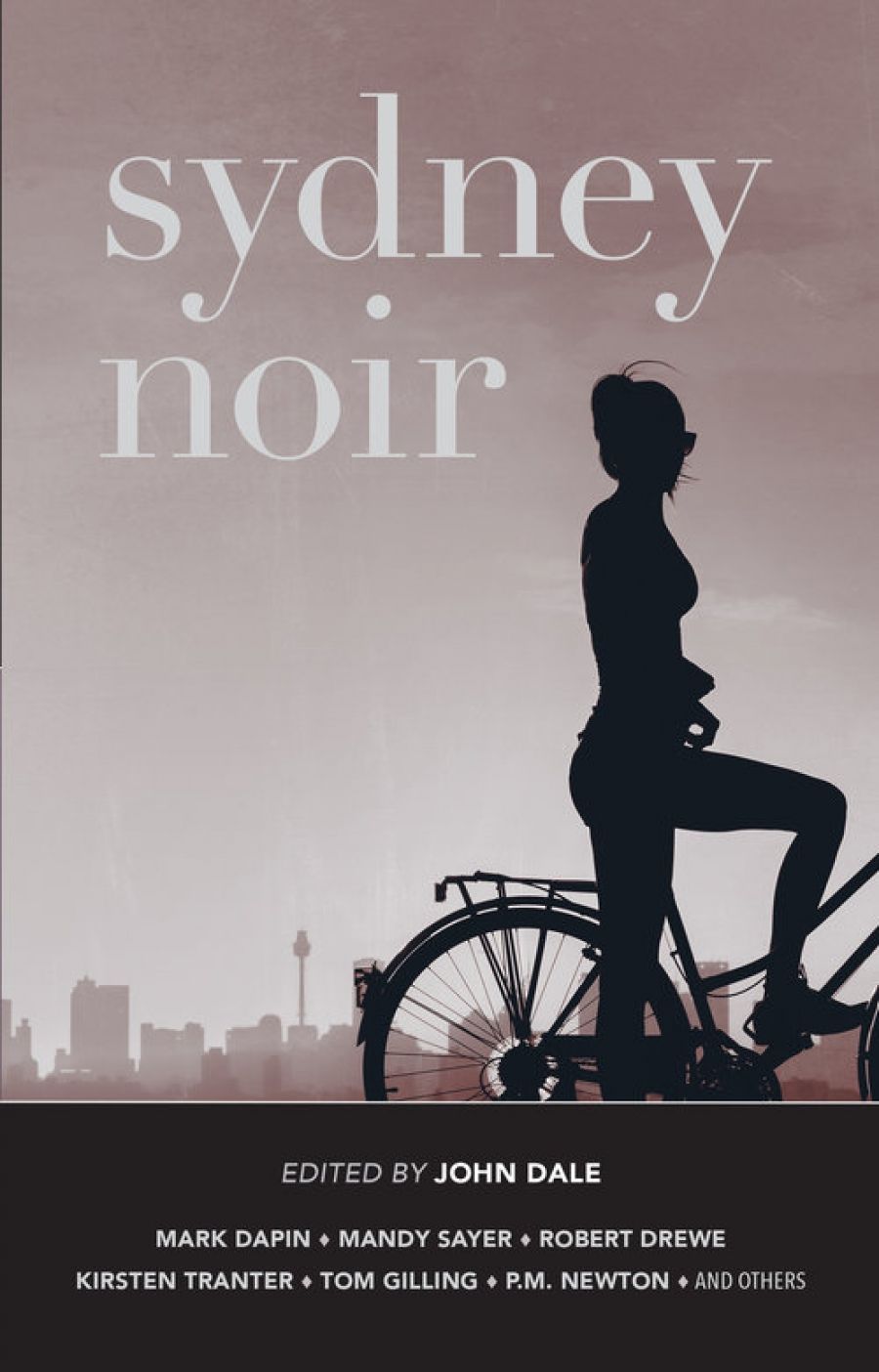
- Free Article: No
- Contents Category: Fiction
- Custom Article Title: Chris Flynn reviews 'Sydney Noir' edited by John Dale
- Review Article: Yes
- Online Only: No
- Custom Highlight Text:
In 2004, New York-based publisher Akashic Books released Brooklyn Noir, a collection of short fiction written under a specific brief. Stories had to be set in that neighbourhood and feature noir themes: simmering familial revenge, cheating and double-crossing, sexual betrayal, domestic discord, murderous trysts, down-at-heel detectives ...
- Book 1 Title: Sydney Noir
- Book 1 Biblio: Brio Books, $24.99 pb, 256 pp, 9781925589436
There are now ninety-two books in the Akashic Noir series, with another twelve in progress. Barcelona, Helsinki, Lagos, Belfast, and Mumbai have all featured. Collections have been edited by heavyweights like Dennis Lehane, Joyce Carol Oates, Etgar Keret, Amy Bloom, Lawrence Block, and George Pelecanos. When I first discovered the series eight years ago, I binged on as many of the books as I could find. They seemed to offer a more realistic snapshot of community. Stories opened a window onto specific streets and neighbourhoods, usually from a working-class perspective.
Australia has been conspicuously absent from the series, until now. To an outsider dazzled by sunshine and touristic glamour, Sydney might seem like an odd fit for stories of this nature. Despite editor John Dale’s credentials as a two-time Ned Kelly Award winner, the task of living up to Akashic Noir’s consistently high standard is considerable. This long-time fan of the series breathed a sigh of relief upon discovering that not only is Sydney Noir very good indeed, it is one of the best in Akashic’s canon for some time.
 Circular Quay, Sydney, 1945 (photograph via NSW State Archives/Flickr)
Circular Quay, Sydney, 1945 (photograph via NSW State Archives/Flickr)
Writers have embraced the brief with gusto. Contributors are, for the record, Kirsten Tranter, Mandy Sayer, Dale himself, Eleanor Limprecht, Mark Dapin, Leigh Redhead, Julie Koh, Peter Polites, Robert Drewe, Tom Gilling, Gabrielle Lord, Philip McLaren, P.M. Newton, and Peter Doyle. It is worth listing them: it is unusual for fourteen very different authors, writing in a variety of styles, to achieve (indirectly) a consistent tone of menace while capturing the flavour of suburbs like Balmain, La Perouse, Bankstown, Mosman, and Redfern.
Experienced hands like Drewe, Doyle, and Lord turn in assured performances with their tales of unfaithful swimmers, cocaine deals gone sour, and lifetime grudges coming to fruition, but several new and unsung writers prove equally adept in approaching this genre.
Kirsten Tranter opens the collection with an engaging homage to Raymond Chandler’s The Big Sleep, complete with a David Hamilton-esque photographer snapping nude portraits of underage girls. Former drug dealer Rob, returned home to Balmain after a period in exile, falls into the role of amateur gumshoe. He is witness to the unseemliness of baby boomers gone mad with an excess of money and sex. Their nihilistic moral bankruptcy has been passed on to their spoilt children, who don’t know any better. The recent Dorothy Hewett exposé adds a creepy resonance to Tranter’s story.
Julie Koh, who made a splash with her second short story collection, Portable Curiosities (2016), continues to embrace the role of literary-innovator-in-chief with ‘The Patternmaker’, in which a fashion designer’s obsession with a reality show tips her over the edge into insanity as she plans a sex/murder tryst in her grim studio. Hot on Koh’s heels comes ‘Toxic Nostalgia’, a story by Peter Polites. Against the backdrop of a nightclub scene, a young couple must deal with the consequences of racking up a drug debt. Polites’s début novel, Down the Hume (2017), was praised as a touchstone in queer, Western Sydney, working-class noir, and ‘Toxic Nostalgia’ is arguably the story that lingers longest in the memory. It is deft, subtle, evocative, and has a great ending.
Polites has some competition for the prize of best climax, notably from Mark Dapin, whose story of a Laotian architect wrongly imprisoned for murder has an unforeseen payoff. Leigh Redhead comes close, with her story of a stripper obsessed with a motivational tome who stumbles upon the orgasm of a lifetime. She takes shocking steps to ensure it never ends. Another highlight is Philip McLaren’s story ‘Black Cul-de-sac’, a hardboiled tale of an Aboriginal liaison officer investigating his cousin’s death in Redfern. McLaren is a woefully underappreciated author whose style is uncompromisingly violent and eminently readable – a perfect fit for this genre.
Sydney Noir offers a genuine insight into the sordid underbelly of life in the Emerald City. Its characters work in Liquorland and drive taxis. They bemoan the loss of their community identity to gentrification. The old familiar pubs now serve haute cuisine in rooftop gardens, while locals struggle to pay rent. Characters stumble between burger shops and rundown apartment blocks that haven’t been renovated in decades. As a snapshot of contemporary Australia, this collection delivers in ways that most middlebrow literary fiction cannot seem to get its head around, even though much literary fiction flirts with the noir genre without fully committing. Here is a tough but tender vision of multicultural working-class Australia, with all its warts and anxieties. Roll on Melbourne, Brisbane, Adelaide, and Perth. The gauntlet has been thrown down.



Comments powered by CComment